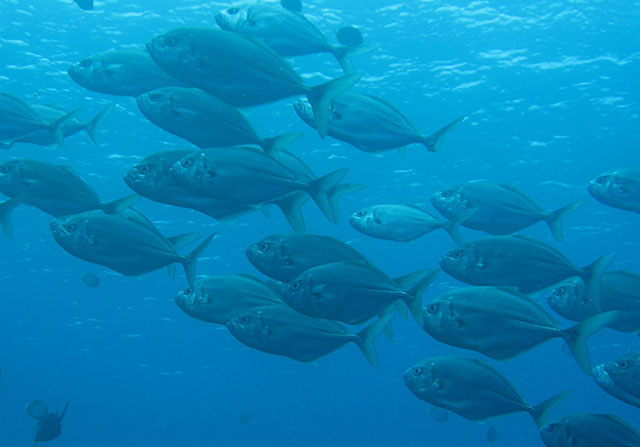| Carangidae (Jacks and pompanos), subfamily: Caranginae |
| 58 cm TL (male/unsexed) |
|
reef-associated; marine; depth range 50 - 300 m |
| Southeast Atlantic: St. Helena and Ascension islands (Ref. 7097). Western Indian Ocean: southern Red Sea, off Oman and Sri Lanka. Eastern Pacific: Hawaiian and Revillagigedo islands (Ref. 9283). Reported from the Arafura Sea (Ref. 9819) and Persian Gulf (Ref. 68964). |
|
Dorsal spines (total): 9-9; Dorsal soft rays (total): 25-30; Anal spines: 3-3; Anal soft rays: 19-22. Description: Dorsal charcoal, grey or black, ventral paler or silver; vertical bars 6-7 narrow dark greyish, sometimes faint, separated by lighter spaces; mouth blue black; tongue, palate, and floor of mouth white or cream. Body oblong and compressed; profile, dorsal more convex than ventral. Snout widely rounded. Ventral area of chest up to origin of pelvic fins scaleless. LL scutes strong 23 to 40. (Ref. 55763, 90102) |
| Adults are benthopelagic in sandy bottoms at the foot of the edge of the outer reefs, continental coasts and around islands (Ref. 9283). Solitary or forming small schools (Ref. 30573). Mainly nocturnal (Ref. 4887). Marketed fresh and salted or dried (Ref. 9283). |
|
Least Concern (LC); Date assessed: 09 March 2015 Ref. (130435)
|
| harmless |
Source and more info: www.fishbase.org. For personal, classroom, and other internal use only. Not for publication.
